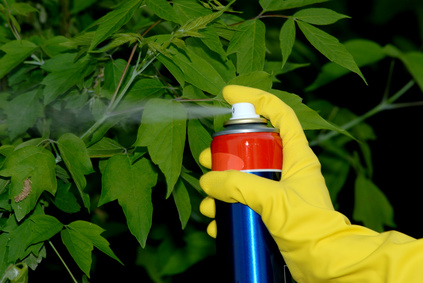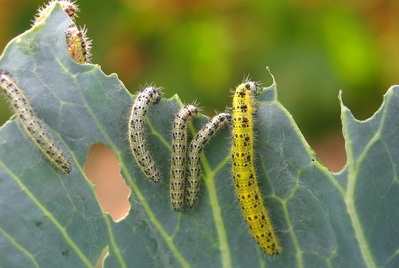Categories
Calendars
Guides
Reviews
Archive
Gallery
Articles
Ask Our Gardening Expert
Organic Pest Hints
Garden pests are a nuisance without a doubt. The damage they cause affects the quality of what we grow, whether food plants or ornamental plants. The more we learn about them, the more we can understand they do not deserve the reputation we give them. As organisms, they have been in existence for millions of years, well before man started to care for plants and regard them as competition. After all, we provide them with large amounts of food in close proximity. They are merely taking advantage of the resources we present them. As humans, would we not do the same?
Interest in organic growing developed in the last century when people questioned the use of highly poisonous chemicals to control plant pests and diseases of the food we eat. Organic pest control uses methods that do not require the use of chemicals made from non-organic sources. It uses a range of techniques that together, provide control without the use of highly toxic substances. It is unrealistic to expect a complete eradication of pests. Minor damage can be ignored. The aim is to control them to an acceptable level. It is best not to rely on one method. For best results, use a number of methods. First of all, avoid the conditions that lead to infestation, then, encourage pest predators and last of all, use pesticides. This is called “integrated pest management”, or IPM.
It is interesting to look at some of the growing methods used in the past, before the use of chemicals was widespread. A number of simple and interesting techniques can control pests in the garden without the use of pesticides.

Crop rotation prevents the carry over of pests by removing their food and growing it elsewhere. In this way, the effects of carrot fly, onion fly and wireworms are reduced. Deep digging exposes soil borne pests to the weather and to avenging garden birds. Companion planting disguises the distinctive smell of plants that pests may sense. Many pesticides are non specific, killing helpful as well as harmful organisms. Avoiding pesticides will encourage ladybird larvae and hoverflies that feed on aphids and parasitic wasps that lay their eggs inside cabbage butterfly caterpillars. Trees and bushes provide nesting sites for many garden birds that feed on slugs and snails.
Pests can be deterred by simple barriers. Netting prevents access to plants by birds and insects. A sprinkling of sand around vulnerable plants discourages slugs and snails.
Traps are effective. A small container sunk level with the soil and filled with stale beer traps slugs and snails. A screwed up ball of newspaper or a slightly open matchbox attracts earwigs that will use it as a shelter in the daytime. The matchbox can be emptied and re-used, the newspaper can be burned.
Hand picking is a good way to control cabbage white caterpillars when there are a small number of plants. A night-time or early morning raid on slugs and snails works well. Use a sharp stick to impale them or collect them in a bucket and pour on hot water. They can be added to the compost heap.

Organic chemicals used in pest control are dangerous and should be handled with care. Labels should be read and instructions followed as with non-organic pesticides
Insecticidal soaps are sodium or potassium salts combined with fatty acids. They penetrate the insect’s outer shell and cause their cells to collapse. Neem come from the kernels of the fruit of the Indian neem tree and upsets the insect’s hormonal system.
Horticultural oil is highly refined petroleum (organic), when sprayed on to foliage it suffocates insects and disrupts feeding. Pyrethrins are powders made from a species of chrysanthemum, when dusted on leaves, cause a rapid death. Derris dust is made from the roots of a climbing plant from South East Asia that contain rotenone, a strong insecticide. All of these substances wash off and break down easily.
There are many things a home gardener can do to follow the organic trail without recourse to chemicals of any form. Our produce is not graded for size, colour and quality. ‘Second grade’ produce is sold for a fraction of the price of ‘first grade’. We can tolerate a little damage. It does not matter to us if there are a few caterpillars on the cabbages or slug damage on the outer leaves of the lettuce. We’ll eat them anyway and they will taste better for having been grown by us.